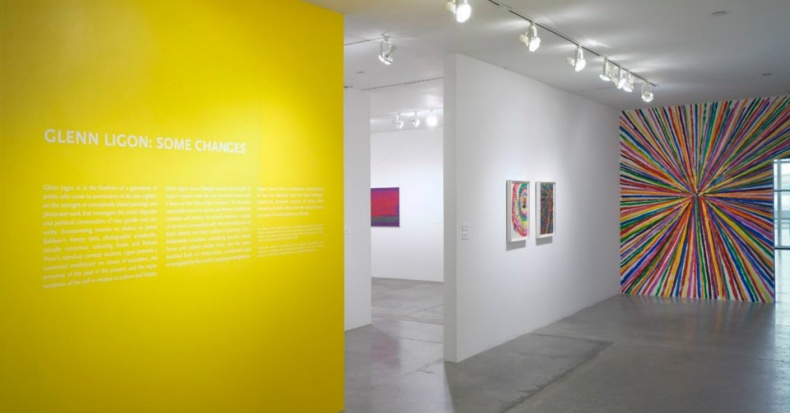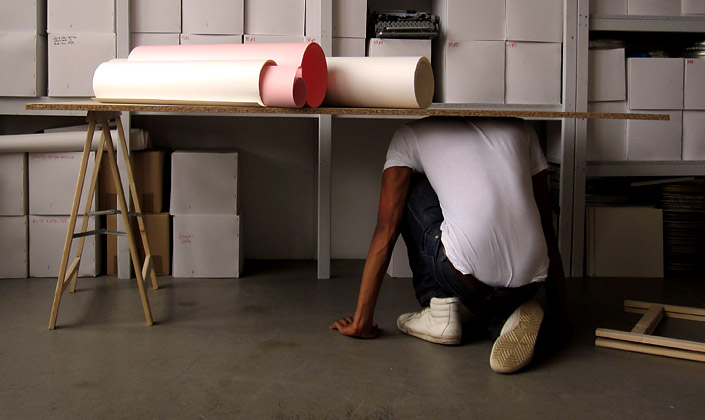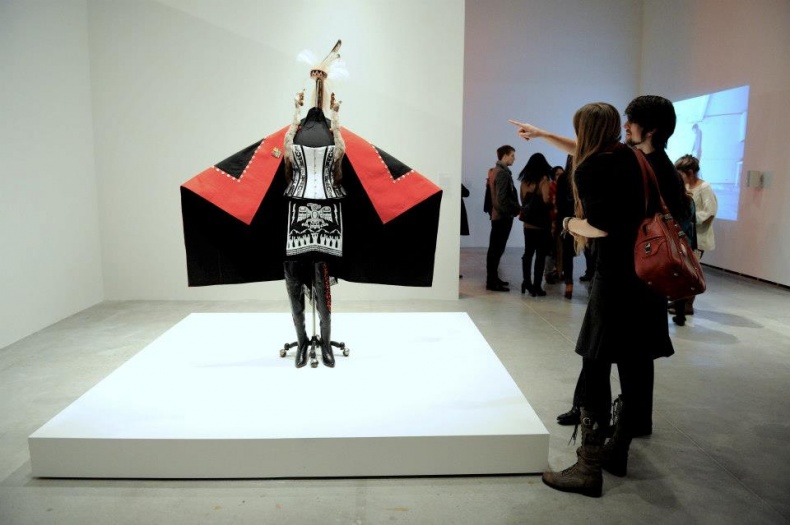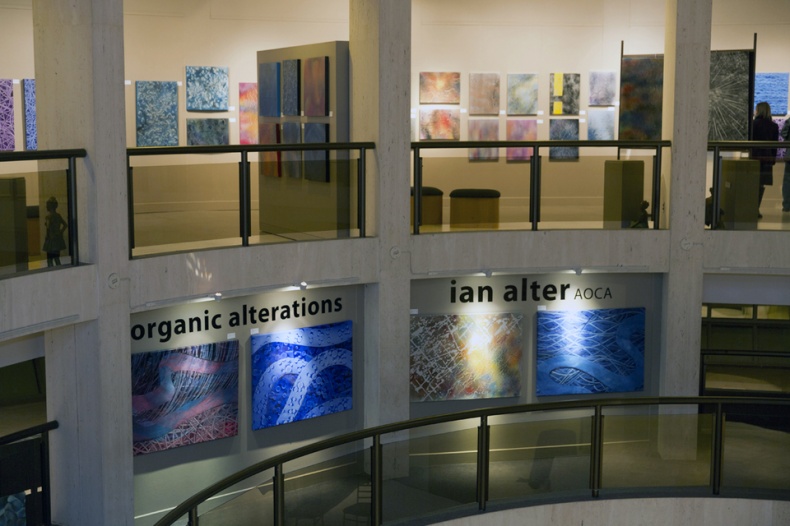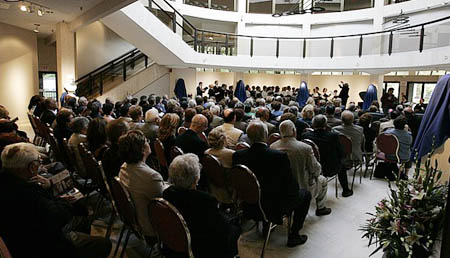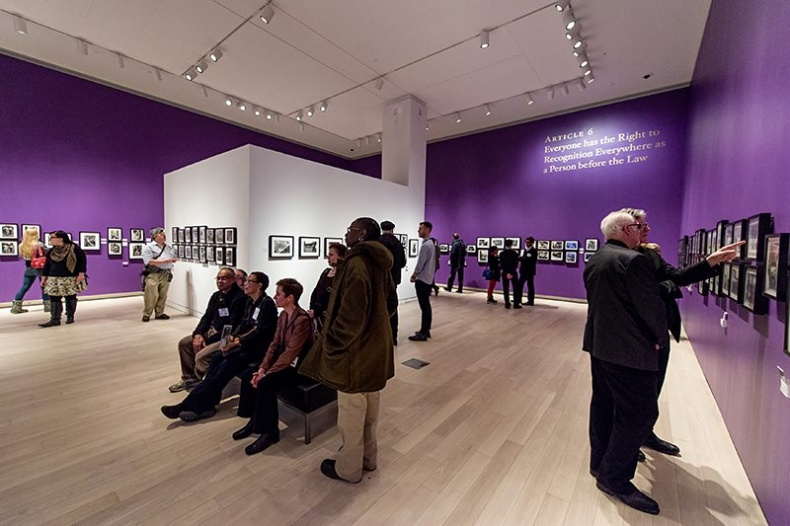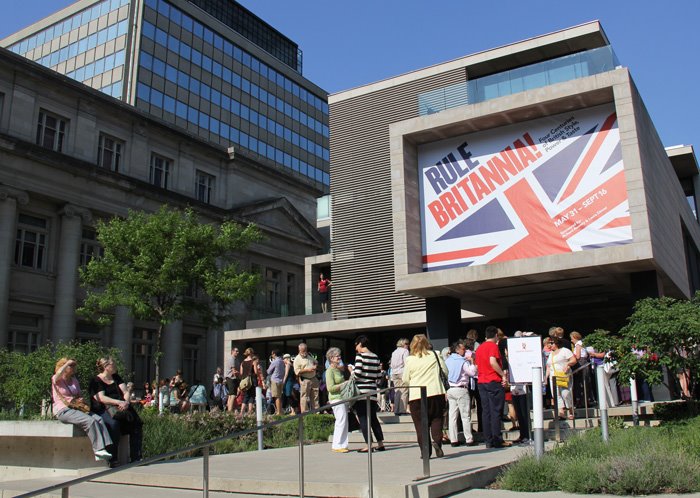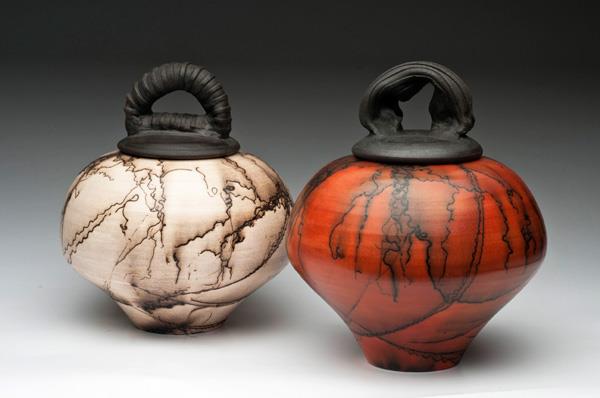
The Power Plant Gallery
Perhaps it's true that the first place to look for your glasses when you lose them is your nose. I was sitting in my house, wondering what galleries I should present to you next, and then it hit me. I have covered quite a lot of exhibition art spaces that I love in Toronto except for the most obvious, so I decided to change the orientation of my "Galleries of Toronto" series just a touch. From mostly private and artist-run establishments, I'll walk you through a couple of my favourite public galleries. These are the spaces that ignited my love for art, and I know you're probably already familiar with them, but for those who are new to the city or haven't been to some of these galleries yet, I hope you'll enjoy this little tour through my selection.
The Power Plant (Map)

The Power Plant Gallery
Under the careful eye of director Gaëtane Verna and her amazing team, The Power Plant runs as a well-greased machine. This amazing venue, located in accordance with the current trend of contemporary galleries building in the harbour, celebrates its 25th anniversary. Verna sends a message to all visitors to The Power Plant:
We had an exciting lineup of exhibitions and associated programs set for each season of the anniversary year. Last spring opened with a solo exhibition by Los Angeles-based artist Kerry Tribe and an innovative archive project mining the gallery's 25-year history. In the fall, you could join us for the Toronto premiere of the world-renowned video installation The Clock by Christian Marclay, winner of a Golden Lion for the best artist at the 54th Venice Biennale. This captivating 24-hour looped video, which plays in real time, was loaned from the National Gallery of Canada and the Museum of Fine Arts, Boston, and made possible by the generosity of the Rapp and Smith families. Our gallery presented Omer Fast's Five Thousand Feet is the Best, also presented at the Venice Biennale, as part of a larger solo exhibition rounding out our exciting Fall 2012 season. Make sure you don't also miss our upcoming exhibitions: Draw the line and Postscript: Writing After Conceptual Art.

Draw The Line Exhibition
Draw the line (22 June to September 2, 2013) is a solo exhibition of work by Brussels-based artist Jimmy Robert. Robert's practice typically explores the corporeal potential of a range of media including photography, drawing, film, video, sculpture, and performance. In his first Canadian solo exhibition, Robert addresses questions of limits: of his body, of the media he uses, of our understanding of exhibitions, and the various disciplines his work encompasses. At the centre of Draw the line is a commissioned performance project that takes place within this installation of new and past work at The Power Plant.
The second major exhibition taking place in the Power Plant is Postscript: Writing After Conceptual Art (June 22 to September 2, 2013), a group exhibition featuring the work of more than fifty Canadian and international artists and writers. It is the first exhibition to examine the work of conceptual writing, investigating the roots of the movement in the art of the 1960s and '70s and presenting contemporary examples of text-based art practices. The Power Plant brings Postscript to the gallery to explore the place of language within contemporary art and broadly examine its relationship to history. The contemporary conceptual writing filling the galleries includes paintings, drawings, prints, 16mm films, digital video, photographs, mixed-media sculpture, sound installations, and iPad applications. The historical works on view are distinguished by their increasingly obsolete bound structure.

The Power Plant Gallery Exhibition
This is just a very tiny window into the events The Power Plant offers. If you want to follow some of the original writing and video outputs related to the centre's programming and to the field of contemporary art more broadly, follow the Power Plant's new online hub, Switch On. The online platform comes from the print Switch magazine, which I also highly recommend.
Website: www.thepowerplant.org
Phone: (416) 973-4949
Email:
Opening hours Tuesday–Sunday 10:00 A.M.–5:00 P.M., Thursday 10:00 A.M.-8:00 P.M., Open holiday Mondays
Joseph D. Carrier Art Gallery (Map)

Joseph D. Carrier Art Gallery
Carrier's is the third largest gallery in the Toronto area and certainly one of my favourites. As they say, it's not only about what a gallery can actually offer in terms of art but also about how it offers it, and this is a very strong feature of Carrier's. Their exhibitions not only have high-quality art on offer, but they also know how to present it to the visitors. It's no wonder they have more than 20,000 visitors a year! The three-level gallery is also called mini-Guggeinhem.
The location of Carrier's is also very interesting. I think I've already established that I'm a big fan of Toronto's multicultural dimension, and Carrier's fits into this concept very conveniently. The close proximity to the Columbus Centre places it in the Italian community.The Columbus Event Centre itself is situated on four acres where you can find charming and very romantic Mediterranean gardens, water fountains, and gazebos, and it offers (although you have to be a bit pragmatic from time to time) ample complimentary parking. Centrally located in the Greater Toronto Area at the corner of Lawrence Avenue West and Dufferin Street, the Centre is easily accessible from major highways and major city routes by public transit. The Centre as well as the Gallery itself are part of Villa Charities.

The Carrier Gallery Reception
Contributing to the legacy of its surroundings, the gallery supports Canadian artists with Italian roots, but it has also displayed original work by Leonardo Da Vinci, Piranesi, Picasso, and other historical masters. This concept is surely unique among Toronto galleries. On display is a growing permanent collection of no less than 200 contemporary works.
This season offers a colourful series of exhibitions to choose from in Carrier's. The first one I advise you to visit is Italia del Futuro/Italy of the Future, which starts on June 6 and will be on display until June 26. It is a comprehensive overview of the most important scientific and technological innovations pioneered by Italy at the international level.
The exhibition includes a video by science show host Alberto Angela, who guides visitors into appreciating the topics that are presented on two large stands: robotics, transport, nuclear physics, medicine and diagnostic apparel, interior design, cultural heritage and restoration, aerospace research, and astrophysics.
The second exhibit I highly recommend is Viva Vitalita', a showcase of Italo-Canadian and Italian artists organized by Marcello Tarantino in celebration of Italian Heritage Month. Viva Vitalita' also starts on June 6 and closes on July 8, so hurry up if you want to catch a glimpse of these amazing works displayed at Carrier's!
Website: www.villacharities.com/carrier
Phone: (416) 789-7011 ext.245
Opening hours Monday-Friday, 10:00 A.M.-5:00 P.M.
Ryerson Image Centre (Map)

Ryerson Image Centre
I chose The Ryerson Image Centre (RIC) because of its unusual character. It's part of Ryerson University, but despite (or should I say because of) its academic background, it offers a very intense visual experience. The RIC is both a national and international platform for study, teaching, research, and exhibit photography and related media. The uniqueness of the RIC is in its combination of three areas of expertise. Not only do they have a very intriguing exhibition program (I'll write some more about this later) but they also cover the fields of research (primary research, workshops, conferences, publication programs) and also boast very impressive acquisitions. The foreword by Doina Popescu, the director of RIC, sums up the institution's philosophy very nicely:
The Ryerson Image Centre will offer programs that are designed to bring an exciting new voice to the arts dialogue in Toronto and across the country; to reach out to arts institutions, archives, curators, scholars, and artists around the globe; and to engage the multidisciplinary academic communities across campus.
Let's look into the future exhibitions in the RIC for 2013. This is the point where it got really interesting for me. My main interest lies with three exhibitions: Images of Women and War, which is running from June 4 until June 14, 2013, Gabor Szilasi's The Eloquence of the Everyday, running from June 19 until August 25, and Robert Burley's The Disappearance of Darkness, which is prepared for the beginning of 2014.
Images of Women and War is an exploration of the female experience within war. It attempts to create a greater understanding of women who were and are exposed to war. Targeted issues such as post-traumatic stress disorder help bring focus to the outcomes and effects war has on women.

Ryerson Image Centre Exhibition
Szilasi's work presents environmental portraits, domestic and urban views of Montreal and Budapest, and images of rural Quebec in a way that no other collection does. Moreover, it's not very easy to catch his exhibition in Toronto, so make sure you don't miss it!
And finally, The Disappearance of Darkness examines both the dramatic and historical demise of film-manufacturing facilities and industrial darkrooms. The photographs taken between 2005 and 2010 speak to sites and events related to the key corporations involved in this transformation, such as Kodak, Agfa, and Ilford. This exhibition addresses both the emergence of a new technology, which irrevocably changed photography, as well as the abrupt and rapid breakdown of a century-old industry, which embodies the medium's material culture.
Website: www.ryerson.ca/ric/
Phone: (416) 979-5164
Email:
Opening hours Tuesday-Friday, 11:00 A.M.-6:00 P.M.; Wednesday, 11:00 A.M.-8:00 P.M.; Saturday, 12:00 P.M.-5:00 P.M.
Gardiner Museum (Map)

Gardiner Museum
Alexandra Montgomery, the Executive Director of the Gardiner Museum, introduced the Museum very nicely, so I'll use her words:
The Gardiner Museum is Canada's national ceramics museum and one of the world's great specialty museums. We are small, focused, and committed to making a contribution to the medium we celebrate as well as the community we serve. We strive to be an inviting destination that inspires and connects people, art, and ideas through clay.
The Gardiner invokes a very modern atmosphere right from the moment you approach the building. Two out of three floors are reserved for exhibitions, while the last is occupied by the restaurant but also hosts other events. The Museum itself is quite small — not what you'd expect when you look at it from outside. This is why I think there's more of a gallery feel to it and decided to include it in my galleries series. The overall feeling is very pleasant. The different sections of the exhibition are in very comprehensive order and give the visitor a pleasing sense of continuity.
There are two exhibitions I'm really looking forward to. The first is The Art of the Everyday, which documents the rise of the faience industry in 17th- and 18th-century France. Featuring approximately 40 objects for everyday use and ornamental wares, this exhibition surveys the production of the foremost faience centres, including Nevers, Rouen, Marseille, Moustiers, and Strasbourg. The exhibition runs from August 22, 2013, to January 5, 2015.
The second exhibition I highly recommend is Kathy Venter's LIFE. The exhibit is already on and runs until September 15. Kathy Venter is a celebrated ceramic artist internationally recognized for her life-size figurative sculptures. The artist's dialogues with time, femininity, community, and intercultural understanding capture the continuity of the human condition. Kathy Venter – LIFE addresses our place in the broader universe with equanimity, humility, and dignity, and it rewards visitors with a sense of open, dynamic serenity.
Website: www.gardinermuseum.on.ca
Phone: (416) 586-8080
Email:
Opening hours Monday-Thursday, 10:00 A.M.-6:00 P.M.; Friday, 10:00 A.M.-9:00 P.M.; Saturday & Sunday, 10:00 A.M.-5:00 P.M.


